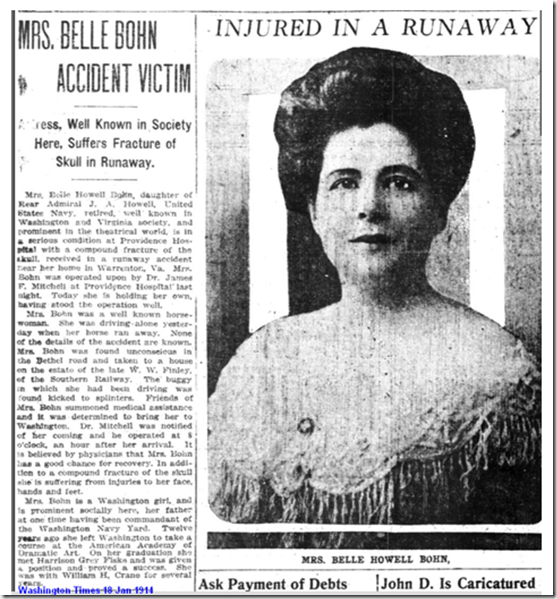Constitutions of Clarendon
1164
 From the year of our Lord's incarnation 1164, the fourth year of the papacy of Alexander, the tenth of the most illustrious Henry, king of the English, in the presence of the same king, was made this remembrance or recognition of a certain part of the customs, liberties, and dignities of his predecessors, that is to say of King Henry his grandfather and others, which ought to be observed and held in the kingdom. And because of dissension and discords which had arisen between the clergy and the lord king's justices and the barons of the kingdom concerning the customs and dignities, this recognition has been made before the archbishops and bishops and clergy, and the earls and barons and great men of the kingdom. And these same customs declared by the archbishops, bishops, earls, and barons, and by the nobler and older men of the kingdom, Thomas archbishop of Canterbury and Roger archbishop of York and Gilbert bishop of London and Henry bishop of Winchester and Nigel bishop of Ely and William bishop of Norwich and Robert bishop of Lincoln and Hilary bishop of Chichester and Jocelin bishop of Salisbury and Richard bishop of Chester and Bartholomew bishop of Exeter and Robert bishop of Hereford and David bishop of St. David's and Roger elect of Worcester conceded and on the word of truth firmly promised by word of mouth should be held and observed for the lord king and his heirs in good faith and without subtlety, these being present: Robert earl of Leicester, Reginald earl of Cornwall, Conan earl of Brittany, John earl of Eu, Roger earl of Clare, earl Geoffrey de Mandeville, Hugh earl of Chester, William earl of Arundel, earl Patrick, William earl of Ferrers, Richard de Luci, Reginald de Mowbray, Simon de Beauchamp, Humphrey de Bohun, Matthew de Hereford, Walter de Mayenne, Manser Biset the steard, William Malet, William de Courcy, Robert de Dunstaville, Jocelin de Baillol, William de Lanvallei, William de Caisnet, Geoffrey de Vere, William de Hastings, Hugh de Moreville, Alan de Neville, Simon Fitz Peter, William Maudit the chamberlain, John Maudit, John Marshall, Peter de Mara, and many other great men and nobles of the kingdom both clergy and laymen.
From the year of our Lord's incarnation 1164, the fourth year of the papacy of Alexander, the tenth of the most illustrious Henry, king of the English, in the presence of the same king, was made this remembrance or recognition of a certain part of the customs, liberties, and dignities of his predecessors, that is to say of King Henry his grandfather and others, which ought to be observed and held in the kingdom. And because of dissension and discords which had arisen between the clergy and the lord king's justices and the barons of the kingdom concerning the customs and dignities, this recognition has been made before the archbishops and bishops and clergy, and the earls and barons and great men of the kingdom. And these same customs declared by the archbishops, bishops, earls, and barons, and by the nobler and older men of the kingdom, Thomas archbishop of Canterbury and Roger archbishop of York and Gilbert bishop of London and Henry bishop of Winchester and Nigel bishop of Ely and William bishop of Norwich and Robert bishop of Lincoln and Hilary bishop of Chichester and Jocelin bishop of Salisbury and Richard bishop of Chester and Bartholomew bishop of Exeter and Robert bishop of Hereford and David bishop of St. David's and Roger elect of Worcester conceded and on the word of truth firmly promised by word of mouth should be held and observed for the lord king and his heirs in good faith and without subtlety, these being present: Robert earl of Leicester, Reginald earl of Cornwall, Conan earl of Brittany, John earl of Eu, Roger earl of Clare, earl Geoffrey de Mandeville, Hugh earl of Chester, William earl of Arundel, earl Patrick, William earl of Ferrers, Richard de Luci, Reginald de Mowbray, Simon de Beauchamp, Humphrey de Bohun, Matthew de Hereford, Walter de Mayenne, Manser Biset the steard, William Malet, William de Courcy, Robert de Dunstaville, Jocelin de Baillol, William de Lanvallei, William de Caisnet, Geoffrey de Vere, William de Hastings, Hugh de Moreville, Alan de Neville, Simon Fitz Peter, William Maudit the chamberlain, John Maudit, John Marshall, Peter de Mara, and many other great men and nobles of the kingdom both clergy and laymen.
A certain part of the customs and dignities which were recognized is contained in the present writing. Of which part these are the articles:
1. If a controversy arise between laymen, or between laymen and clerks, or between clerks concerning patronage and presentation of churches, it shall be treated or concluded in the court of the lord king.
2. Churches of the lord king's fee cannot be permanently bestowed without his consent and grant.
3. Clerks charged and accused of any matter, summoned by the king's justice, shall come into his court to answer there to whatever it shall seem to the king's court should be answered there; and in the church court to what it seems should be answered there; however the king's justice shall send into the court of holy Church for the purpose of seeing how the matter shall be treated there. And if the clerk be convicted or confess, the church ought not to protect him further.
4. It is not permitted the archbishops, bishops, and priests of the kingdom to leave the kingdom without the lord king's permission. And if they do leave they are to give security, if the lord king please, that they will seek no evil or damage to king or kingdom in going, in making their stay, or in returning.
5. Excommunicate persons ought not to give security for an indefinite time, or give an oath, but only security and pledge for submitting to the judgment of the church in order that they may be absolved.
6. Laymen ought not to be accused save by dependable and lawful accusers and witnesses in the presence of the bishop, yet so that the archdeacon lose not his right or anything which he ought to have thence. And if there should be those who are deemed culpable, but whom no one wishes or dares to accuse, the sheriff, upon the bishop's request, shall cause twelve lawful men of the neighborhood or the vill to take oath before the bishop that they will show the truth of the matter according to their conscience.
7. No one who holds of the king in chief or any of the officials of his demesne is to be excommunicated or his lands placed under interdict unless the lord king, if he be in the land, or his justiciar, if he be outside the kingdom, first gives his consent, that he may do for him what is right: yet so that what pertains to the royal court be concluded there, and what looks to the church court be sent thither to be concluded there.
8. As to appeals which may arise, they should pass from the archdeacon to the bishop, and from the bishop to the archbishop. And if the archbishop fail in furnishing justice, the matter should come to the lord king at the last, that at his command the litigation be concluded in the archbishop's court; and so because it should not pass further without the lord king's consent.
9. If litigation arise between a clerk concerning any holding which the clerk would bring to charitable tenure but the layman to lay fee, it shall be determined on the decision of the king's chief justice by the recognition of twelve lawful men in the presence of the king's justice himself whether the holding pertain to charitable tenure or to lay fee. And if the recognition declare it to be charitable tenure, it shall be litigated in the church court, but if lay fee, unless both plead under the same bishop or baron, the litigation shall be in the royal court. But if both plead concerning that fief under the same bishop or baron, it shall be litigated in his court; yet so that he who was first seised lose not his seisin on account of the recognition that was made, until the matter be determined by the plea.
10. If any one who is of a city, castle, borough, or demesne manor of the king shall be cited by archdeacon or bishop for any offense for which he ought to beheld answerable to them and despite their summonses he refuse to do what is right, it is fully permissible to place him under interdict, but he ought not to be excommunicated before the king's chief official of that vill shall agree, in order that he may authoritatively constrain him to come to his trial. But if the king's official fail in this, he himself shall be in the lord king's mercy; and then the bishop shall be able to coerce the accused man by ecclesiastical authority.
11. Archbishops, bishops, and all ecclesiastics of the kingdom who hold of the king in chief have their possessions of the lord king as barony and answer for them to the king's justices and ministers and follow and do all royal rights and customs; and they ought, just like other barons, to be present at the judgments of the lord king's court along with the barons, until it come in judgment to loss of limbs or death.
12. When an archbishopric or bishopric, or an abbey or priory of the king's demesne shall be vacant, it ought to be in his hands, and he shall assume its revenues and expenses as pertaining to his demesne. And when the time comes to provide fro the church, the lord king should notify the more important clergy of the church, and the election should be held in the lord king's own chapel with the assent of the lord king and on the advice of the clergy of the realm whom he has summoned for the purpose. And there, before he be consecrated, let the elect perform homage and fealty to the lord king as his liege lord for life, limbs, and earthly honor, saving his order.
13. If any of the great men of the kingdom should forcibly prevent archbishop, bishop, or archdeacon from administering justice in which he or his men were concerned, then the lord king ought to bring such an one to justice. And if it should happen that any one deforce the lord king of his right, archbishops, bishops, and archdeacons ought to constrain him to make satisfaction to the lord king.
14. Chattels which have been forfeited to the king are not to be held in churches or cemeteries against the king's justice, because they belong to the king whether they be found inside churches or outside.
15. Pleas concerning debts, which are owed on the basis of an oath or in connection with which no oath has been taken, are in the king's justice.
16. Sons of villeins should not be ordained without the consent of the lord on whose land it is ascertained they were born.
The declaration of the above-mentioned royal customs and dignities has been made by the archbishops, bishops, earls, barons, and the nobler and older men of the kingdom, at Clarendon on the fourth day before the Purification of the Blessed Virgin Mary, lord Henry being present there with the lord king his father. There are, indeed, many other great customs and dignities of holy mother church and of the lord king and barons of the kingdom, which are not included in this writing, but which are to be preserved to holy church and to the lord king and his heirs and the barons of the kingdom, and are to be kept inviolate for ever.
Posted 13 May 2016 by Lee R. Drew on Lineagekeeper’s Genealogy Blog
























